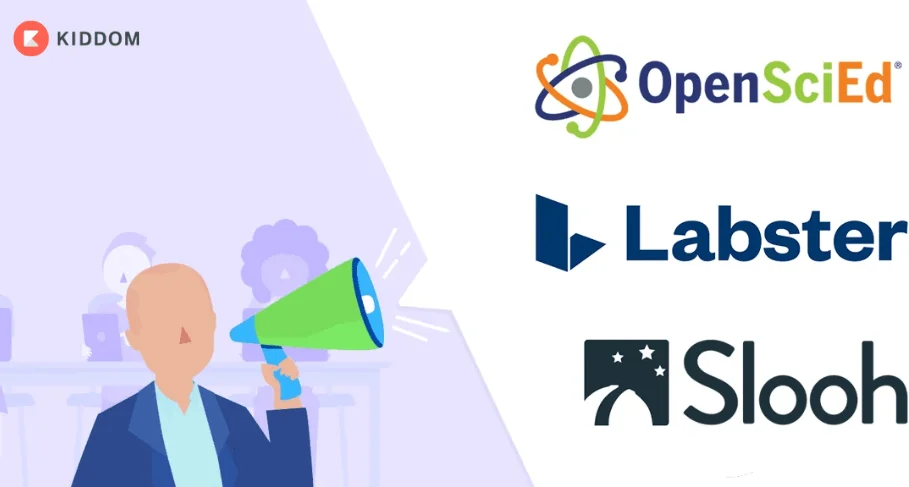Kiddom, a paradigm-shifter for equitable learning and publisher of high-quality instructional materials, has recently announced new partnerships with four esteemed science providers to offer impactful, high-quality learning experiences for grades 6-12. These additions are the first of Kiddom’s core curriculum expansion for 2024.
Kiddom’s new solutions are as follows:
- Available nationally with 100% alignment to Next Generation Science Standards (NGSS)
- Available in state-specific editions to meet Texas, Florida, and Tennessee standards
- Digitally accessible with complementing print additions
- Offered in English and Spanish for grades 6-12
With Kiddom, teachers using these high-quality science solutions will leverage time-saving lesson planning and instructional delivery tools, including actionable student performance reporting. School and district leaders will gain a dedicated set of dashboards to implement their science curricula with integrity at scale and the ability to tailor the curricula to meet the needs of their local communities.
Speaking about the initiative, Co-founder & CEO of Kiddom, Ahsan Rizvi, said:
Kiddom is committed to providing only the highest calibre of science curricula to impact student outcomes and create rich classroom experiences positively. We achieve this by working exclusively with organizations dedicated to evidence-informed practices with proven efficacy. We are pleased to announce partnerships with OpenSciEd, OpenStax, Labster, and Slooh.
OpenSciEd | Grades 6-8
Kiddom will publish OpenSciEd – rated All-Green by EdReports. OpenSciEd is a core curriculum where students explore science through phenomenon-based, three-dimensional units that prioritize understanding and sensemaking. Using a storyline model, students experience knowledge-rich lessons, allowing them to learn, discover, investigate, and construct their knowledge of the wonder of science.
OpenStax | Grades 9-12
OpenStax, powered by Kiddom, offers peer-reviewed content written by subject matter experts for Biology, Chemistry, Physics, Anatomy, and physiology. These rigorous high school courses are aligned with support resources, such as fully customizable content, videos, audio recordings, slide decks, and virtual labs.
Slooh | Grades 6-12
Through Kiddom, Slooh will offer students and educators hands-on access to online telescopes, allowing them to remotely explore and photograph distant regions of space. Learners control real telescopes located worldwide and experience the thrill of discovery while completing standards-aligned activities. Slooh makes the universe’s wonders engaging and interactive for all ages, fostering excitement around space and mathematics.
Labster | Grades 9-12
Integrated within Kiddom’s OpenStax 9-12 curricula, students will experience immersive virtual Labster simulations directly tied to content. These engaging STEM experiences create the opportunity to apply OpenStax learning to real-world scenarios that are otherwise inaccessible, effectively creating equitable science experiences for all students.
Adding further about the development, Chief Academic Officer and Co-founder of Kiddom said:
With Kiddom, districts can access, edit, and distribute versions of OpenSciEd and OpenStax customized for their populations. And once they do, Kiddom provides a real-time perspective on usage and student achievement. The insights with this depth of data are compelling.
All Kiddom Science curricula, including the Texas, Florida, and Tennessee editions, will be available for the 2024-25 school year.
Kiddom supports equitable education across the United States by combining cutting-edge technology with high-quality teaching resources to provide engaging, insightful digital learning experiences. The platform develops technology that enables teachers and students to unlock their full potential. Teachers are either confined by inadequate access to high-quality materials or mandated usage of inefficient technologies that do not fulfil the needs of their students. The company believes technology should be utilized to close the achievement gap and level the playing field for all students.


